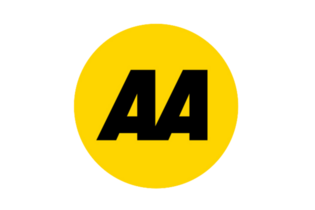Yeah, Nah Awards: Air New Zealand's school holiday price hike

A Consumer investigation has found that it might not be worth flying Air New Zealand to Australia, with evidence that our national carrier is capitalising on market share and demand during the school holidays, giving travellers cause to question if what they’re paying is fair.
Flying across the ditch is expensive. Stats NZ data shows the cost of international air travel has increased by 50% since 2019 – with the increase due to several factors, including Covid-19 and inflation.
But a Consumer investigation has found that flying with Air New Zealand might hurt wallets more than necessary. In fact, we think our national carrier deserves a Yeah, Nah Award for taking New Zealanders for a ride on trans-Tasman routes.


Yeah, Nah Awards
Our first-ever Yeah, Nah Awards highlight the worst of the worst in business to pressure poor-performing companies to up their game.
Our investigation
Over 18 weeks, we tracked the price of 648 flights for a family of four (two adults and two children under 11) to travel return to Aussie for 10 days with Air New Zealand and Qantas. Flights departed from Christchurch, Wellington and Auckland enroute to Brisbane and Melbourne. All prices referred to in this investigation are inclusive of return tickets for four people.
We checked out prices 16 weeks before departure, 6 weeks before departure and 2 weeks before departure, to see how lead-in times affected prices. Each person had one checked bag included in their ticket.
We selected the cheapest flights available for the selected travel dates and destinations.
We tracked prices once a week from 24 April 2024 to 28 August 2024 for travel between 8 May and 18 December. We captured prices during two sets of New Zealand school holidays, the first beginning 6 July (the July school holidays) and the second beginning 28 September (the September school holidays).
Brisbane: a hot family destination or a route ripe for rip-off?
Brisbane is an hour’s drive from Australia’s Gold Coast, one of the most popular holiday destinations for New Zealand families.
Our investigation found that Air New Zealand’s prices for a family to fly return for 10 days to Brisbane increased significantly in the lead-up to and during New Zealand school holidays.

Tickets purchased for a departure date of 10 July, 4 days into the July school holidays, were on average $3,916 more expensive than tickets purchased for 19 June, 3 weeks earlier. That’s an increase of 141%.
We also found that tickets purchased for a departure date of 2 October, 4 days into the September school holidays, were on average $1374.53 more expensive than tickets purchased for 11 September, 3 weeks earlier, an increase of 38%.
In the most egregious instance, the cost of tickets for four from Christchurch, booked 2 weeks out from departure rose to $9,014. Three weeks earlier, flights booked 2 weeks out cost just $3,378. That’s an increase of 167%.
We think paying $5636 more for the same seats and service is a rip-off for families wanting to travel at one of only four opportunities throughout the year.
We also tracked the price of tickets for the same family to travel from Christchurch, Wellington, and Auckland to Melbourne, Australia, but didn’t observe the same price hikes. It was the destination – and its perceived desirability – that made the difference.
Qantas: same flights, less rip-off
Choosing to fly Air New Zealand for a trip across the Tasman in the first week of both school holidays cost families $1,230 more on average than flying Qantas. In other words, Air New Zealand flights were on average 34% more expensive than Qantas flights during the holidays. On average, Air New Zealand was $478 or 16% more expensive to fly with at any time.
From term time to school holidays, Air New Zealand flights increased on average by 43%, whereas Qantas flights increased on average by 24%.
Over the worst period, Qantas fares increased just 7%. When flying from New Zealand to Brisbane during the first week of both school holidays, the cost to fly with our national carrier jumps, costing families $1949 more on average than flying Qantas, with Air New Zealand coming in at 50% more expensive than Qantas.
Flying with Air New Zealand during the school holidays is significantly more expensive
In the worst case, flying with Air New Zealand cost $4,637 more than the Aussie carrier for flights on the exact same day.
In fact, we found Air New Zealand was more expensive than trans-Tasman competitor Qantas for every one of the 24 trips departing during the first week of both sets of school holidays.
We also had a look at Qantas pricing during Queensland’s school holidays. We didn’t observe any comparable price hikes.
How does Air New Zealand’s pricing work?
Air New Zealand uses a pricing tactic called dynamic pricing. It is an algorithmic pricing practice based on, according to the carrier, supply and demand.
A recent Consumer investigation into domestic flights found dynamic pricing could increase the price of the same ticket from Auckland to Dunedin by up to four times as much.
The tactic has come under fire in other industries, such as for event and concert tickets, especially “in-demand” tickets sold by Ticketmaster.
We asked Air New Zealand to explain why flights to Australia were so much more expensive during the school holidays. The airline said it was “supply and demand.”
“As more customers book and the flight fills up, fares will move up through the range, reflecting that there is now greater demand for fewer remaining seats. Simply put, it is a supply and demand-driven pricing system, which means lower fares do sell out quickly for peak travel times, locations, or around events.”
On the route with the steepest price increases during the holidays (Christchurch to Brisbane booked 2 weeks out), tickets purchased with Qantas didn’t suffer the same increases even though it also uses a dynamic pricing model. Is this a sign that Qantas didn’t experience a large increase in demand? Or is there something else going on here?
In the current economic environment, the best way to get cheaper flights seems to be to book earlier, rather than last minute. A spokesperson for Air New Zealand said the airline is “working hard to ensure that Air New Zealand flights are accessible to [families].”
“We know it’s tough for families in New Zealand at the moment … We recommend that families looking for a break book as early as possible to get the best deals.”
But the advice isn’t as simple as “book as early as possible.”
Naturally, consumers expect to pay more the closer they are to departure, but flights booked later for a school holiday departure were astronomical compared to late bookings not made for the holidays.
On average, booking 2 weeks out instead of 6 was $461 more expensive when flying from Wellington to Brisbane and Melbourne, $331 more expensive from Auckland and $481 more expensive from Christchurch.
For flights set to depart on 10 July only, booking 2 weeks out instead of 6 was $1,645 more expensive when flying from Wellington, and $2,881 from Christchurch. The same can’t be said for Auckland, where we observed flights booked 2 weeks out for 10 July were only $84 more expensive on average than flights booked 6 weeks out.
Basically, consumers wanting to pay less shouldn’t book late, should take their location into account and especially shouldn’t book late for a high-demand period.
For Air New Zealand, maintaining its dynamic pricing model is implicit in the rules of booking.
It pointed to its actions after Cyclone Gabrielle, citing them as an example of what happens when airfares are offered only at low price points.
“When the road between Napier and Gisborne was flooded after Cyclone Gabriel, Air New Zealand offered a service between the two cities to keep them connected. We committed to keeping these fares low. This meant they all sold out early and we received feedback from people who needed to travel urgently that they were unable to secure a seat.”
But before the cyclone, this direct route didn’t exist. There were no benchmarks for demand, let alone supply. There are benchmarks for trans-Tasman routes, though. So, how much extra demand is there during the school holidays? How does Air New Zealand supplement extra demand with extra supply?
In a media release before the July holidays, Air New Zealand said it expected 760,000 customers to fly domestically and internationally during the 2-week period. The airline said it added 30,000 domestic seats to meet the impressive demand.
We asked how many extra seats were added to meet international demand, and how many were added on each of our Brisbane routes, but Air New Zealand said this information was commercially sensitive and declined to comment.
Air New Zealand making the most of market share
While supply and demand do impact dynamic pricing algorithms, we’re not convinced it’s that simple. We think it’s likely that dynamic pricing allows Air New Zealand to make up profit margins, and it certainly looks like its practices are capitalising on New Zealanders wanting to travel during the school holidays.
Compared to Qantas, which was consistently cheaper and didn’t have comparable price hikes during either New Zealand or Queensland school holidays, flying with our national carrier to Brisbane looks like a rip off.
Without knowing how many flights Air New Zealand supplies during the school holidays, it is also difficult to know how much of the price increases are out of the airline’s control.
Unfortunately, Air New Zealand’s inability to comment on supply means consumers are left to speculate why tickets purchased for flights during the school holidays are, at times, thousands of dollars more than tickets for flights put on by a different operator or purchased at other times.
As of 2023, Air New Zealand and Qantas Group (including Jetstar) collectively control 87% of the trans-Tasman market. Our national carrier controls 43%, while Qantas (excluding Jetstar) controls 29%. Air New Zealand has recently had a code-sharing agreement with Virgin Australia approved, something that opponents here said would harm the future potential for competition on trans-Tasman routes.
With approximately 9% greater capacity than Qantas, and the largest market share of any single operator on trans-Tasman routes, it’s little wonder why consumers are feeling ripped off. There isn’t enough competition, leaving Air New Zealand to price how it likes, knowing that travelers will pay anyway.

Flight rights campaign
We’re calling for airlines to communicate honestly with passengers about the reason for cancellations and delays, and clearly display their rights.
We've tested 12 travel insurance.
Find the right one for you.



Member comments
Get access to comment